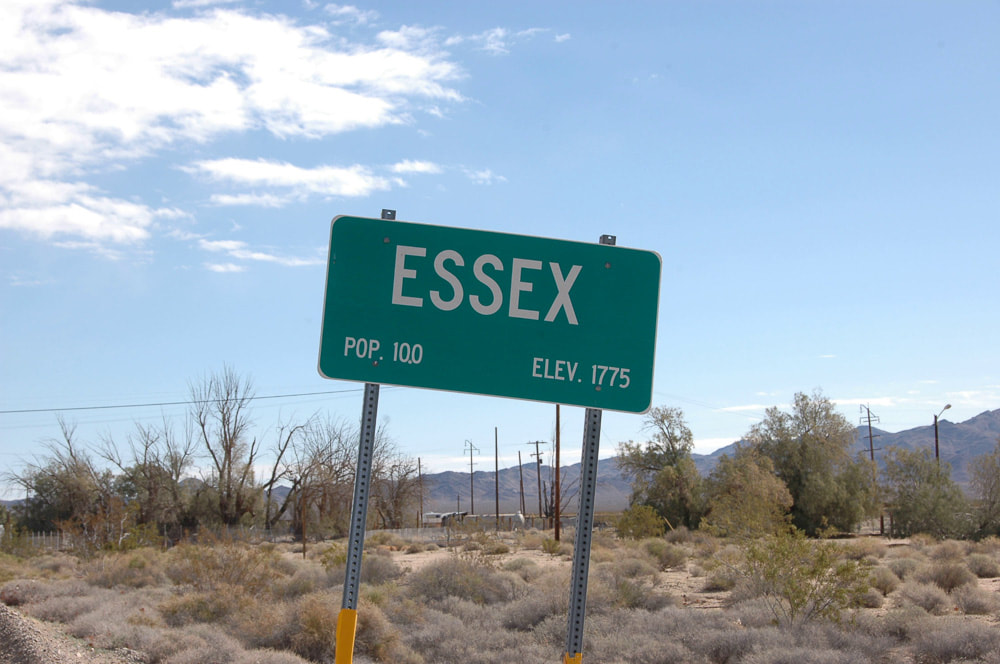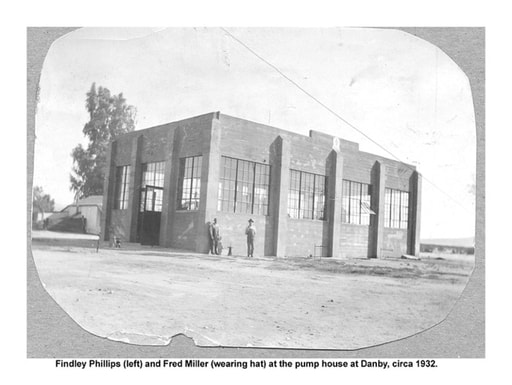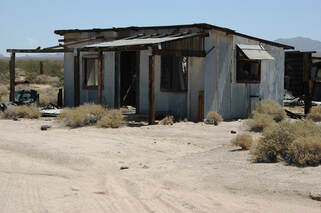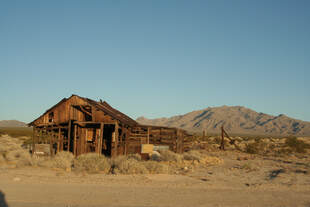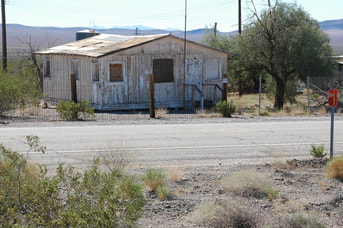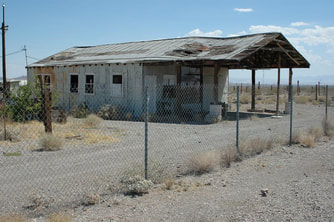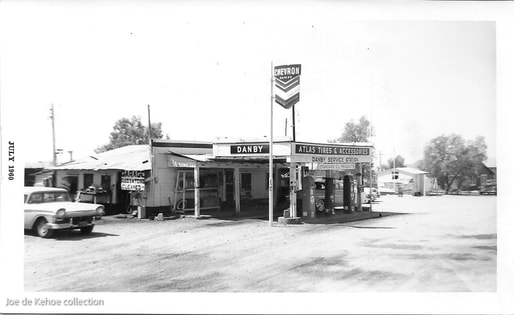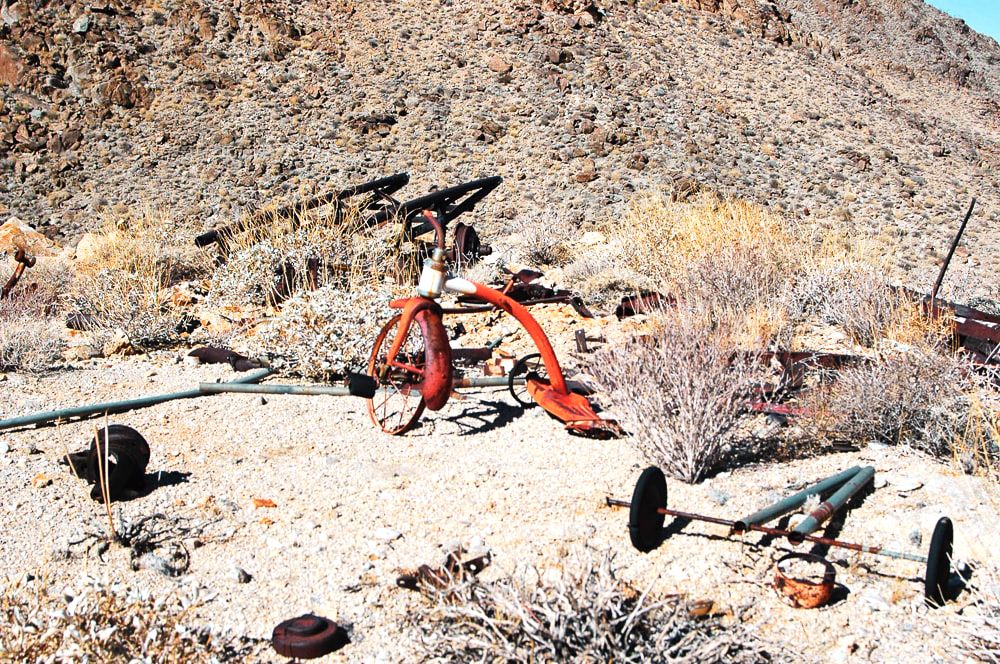|
As you approach Essex on National Trails Highway the highway sign reads "population 100". Even during its busiest period in the 1960s and 1970s the permanent population of Essex probably never exceeded 35 people. The current population of Essex is 5. The one-hundred population figure was put there by the highway department and was based on the number of letter boxes in the post office.
As is the case with most of the former businesses on Old Route 66 through the Mojave Desert of California, today the small cluster of buildings that comprise Danby is just a remnant of what it once was. The site that exists today originated in the early 1930s when Old National Trails Road, Route 66, was paved. Located on the road between Essex and Chambless, during the busiest period in the early 1970s Danby consisted of a garage, a service station, two or three wood framed houses and trailers, and several out-buildings, one of which served as a court house for the Justice of the Peace. There were three places in this immediate area of the desert referred to as Danby. The first one was established in 1883 by the Southern Pacific Railway as a watering stop for the steam locomotives, about 2 miles southeast of what is today National Trails Highway. The name Danby followed the railroad’s convention of naming stops in alphabetical order going east from Amboy – Bolo, Cadiz, Danby, Essex, etc. Initially, water was piped to the railroad via a 2-inch steel pipe from Bonanza Spring in the Clipper Mountains 5 miles northwest of the tracks. As railroad traffic increased the railroad eventually drilled several good water wells at Danby and build a large pumping station. Danby became an important watering stop for the railroad and was home to both railroad workers and a few prospectors who worked mines in the Old Woman Mountains. The concrete pad marking the location of the water wells can still be seen just a few feet south of the tracks, but there is no trace left of the pumping station. Former pumping station at Old Danby, circa 1932.One of the miners living at Danby, Walt Zindell built his cabin out of sheets of corrugated tin but chose to live in a yellow school bus that he parked at the side of the cabin. Although badly dilapidated, Zindell’s cabin and bits and pieces of the school bus are still there. Another miner / prospector, Ben Benjamin built a wooden cabin at Danby that finally succumbed to the elements and collapsed in 2004. While the railroad stop was in operation, Johnny Neilson moved to the Mojave Desert from Scotland and built a service station at the intersection of Old National Trails Road and the primitive dirt road that followed the railroad’s water pipeline north to Bonanza Spring. ( 34° 38’ 26.31” N. 115° 21’ 18.30” W.). The site was about three-quarters of a mile northeast of the railroad. Johnny called it the Bonanza Spring Service Station, but area residents called it simply “Danby Station”. Unlike most service stations along the highway in the desert, Johnny advertised free water to travelers. At the time National Old Trails Road was a dirt track that went in a nearly straight path from Essex to Cadiz. Although it is nearly grown over, traces of the old road are still faintly visible today. 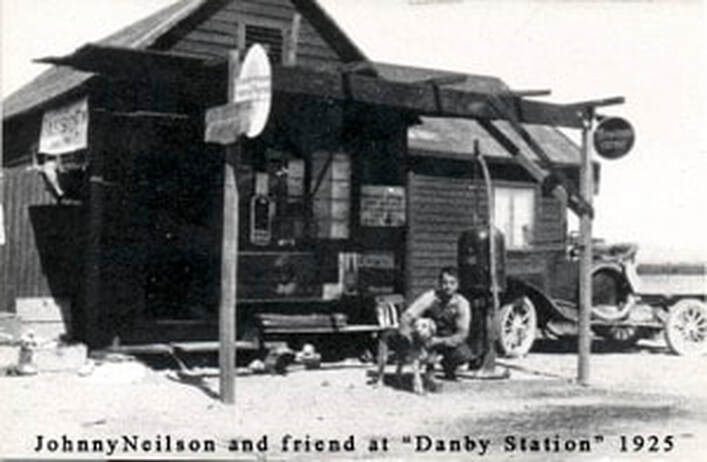 In 1931 the Highway Department paved what was then designated Route 66 between Needles and Barstow but shortened and straightened the road wherever possible. Consequently, the newly paved highway was relocated to its present position, about a mile and a half north of the railroad tracks and a mile north of Johnny Neilson’s “Danby Station”. Neilson moved his service station north to the new highway and was eventually joined by his brother Bill, also from Scotland. Johnny was later elected Justice of the Peace and built a small building at Danby to serve as his courthouse. Although badly weathered, the building is still there. Sometime later a garage was also built at Danby to service travelers on the highway, and it went through several owners during the time it was in operation. The garage, with the mural of a mountain man scene on the front door facing the highway is also still there but is in bad shape and likely to collapse in a few years. Neilson’s gas station in Danby was leased to Slim Hartzler from 1955 to 1960. Neilson did not renew Hartzler’s lease when it came due because he wanted to rent the station to his secretary and her husband. The Hartzler’s left and a few days later the station burned to the ground and was never rebuilt. No trace of the service station remains today. Anyone wishing to view Danby, please do so from the highway as it is all fenced private property and home to a family living there who would prefer not to be disturbed.
From about 1965 to 1967 two prospectors named Jerry Caywood and Jim Craig operated a gold mining operation in Rattlesnake Canyon on the north flank of the Old Woman Mountains, about 7 miles southwest of Danby on old Route 66 in the Mojave Desert of California. Although they were able to extract some placer gold from the dry wash, the amount of gravel that had to be sorted and washed was too labor intensive and expensive to make the operation profitable and consequently the mine was abandoned. As far as I know, the mine never had a name.
|
OverviewRead more about Joe's photos, book excerpts, articles, updates, & more! Archives
October 2023
Categories
All
|

